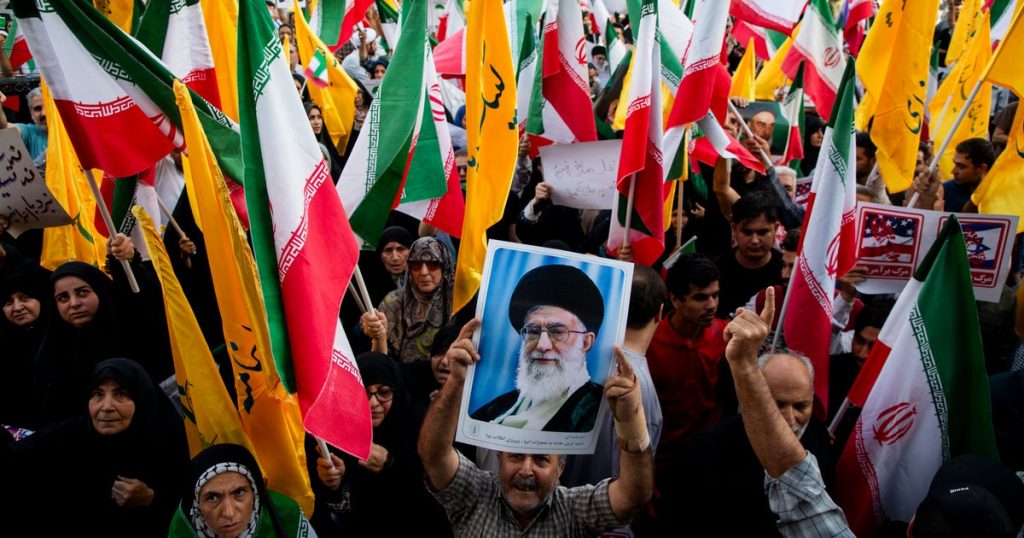Tensions between Iran and Israel have escalated following a recent conflict marked by missile strikes and military operations. Iranian Supreme Leader Ayatollah Ali Khamenei claimed a significant victory over what he termed the “fallacious Zionist regime” while also insisting that Iran targeted military assets in Israel. Conversely, reports indicated that Israel’s military operations inflicted substantial casualties on Iranian forces, raising questions about the actual impact of the ongoing confrontation.
As the war transitioned into a ceasefire, the political implications of Khamenei’s assertions and the realities on the ground have sparked widespread discussion. The aftermath of this conflict has revealed a complex narrative of military capabilities, public sentiment in Iran, and international reactions that warrant further exploration.
| Article Subheadings |
|---|
| 1) Overview of Recent Military Engagements |
| 2) Casualties and Impact Assessments |
| 3) Khamenei’s Propaganda and Public Sentiment |
| 4) International Reactions and Stakeholder Positions |
| 5) The Future of Iran-Israel Relations |
Overview of Recent Military Engagements
The current military clash between Iran and Israel escalated significantly with a series of missile strikes executed by Iran. These actions were framed by Khamenei as a bold declaration of resistance against Israeli aggression. The escalation began shortly after a ceasefire was brokered, which many speculate could be a tactic to regain some level of military initiative. Reports indicate these missile strikes were part of a strategically orchestrated effort aimed at showcasing Iran’s military capabilities and resistance against perceived external threats.
Casualties and Impact Assessments
Despite the Iranian claims of successful targeting, the reality appears to tell a different story. Reports suggest that Iran’s missile launches resulted in the deaths of 28 civilians, with no verified military targets hit significantly, contrasting sharply with Israeli operations that reportedly caused far greater casualties on the Iranian side. Estimates indicate that at least 1,054 individuals were killed, including 318 military personnel. The overwhelming majority of deaths among civilians resulted from missiles striking populated urban areas rather than military installations.
Khamenei’s Propaganda and Public Sentiment
Khamenei’s rhetoric during this conflict has been indicative of a government trying to rally support amidst increasing domestic unease. His recent statements with hyperbolic claims regarding the efficacy and impact of Iranian responses could be seen as a means to bolster morale. The Iranian regime has historically controlled media narratives tightly, limiting the extent to which citizens understand the realities of their situation, which may explain the dramatic proclamations. Despite these efforts, there appears to be a growing public awareness, particularly among younger generations, regarding the limitations of their freedoms and the ongoing struggles against authoritative rule.
International Reactions and Stakeholder Positions
The international community has been closely monitoring this conflict, with various stakeholders weighing in on the implications. Israel’s recent military strategies have been met with criticism and alarm from several world powers, while the U.S. has reaffirmed its commitment to supporting Israel amid these tensions. Assessments from U.S. intelligence agencies suggest that Iranian nuclear capabilities have been set back considerably, influencing not only regional dynamics but also international diplomatic strategies regarding Iran.
The Future of Iran-Israel Relations
Looking ahead, the complexities of Iran-Israel relations remain pronounced, primarily shaped by these recent hostilities. The potential for escalated conflict remains high given the longstanding animosities and lacks of trust between the two nations. The ceasefire provides a temporary reprieve; however, persistent military posturing could foreshadow further confrontations. Observers note that public sentiment in Iran may influence internal political dynamics, perhaps leading to shifts in strategic orientation as citizens grapple with the dual pressures of external threat and internal governance.
| No. | Key Points |
|---|---|
| 1 | Iran’s missile attacks led to civilian casualties and did not significantly impact Israeli military targets. |
| 2 | Khamenei’s claims appear exaggerated, aiming to bolster support amid domestic discontent. |
| 3 | Civilian awareness of government restrictions has grown, leading to heightened public discourse against authorities. |
| 4 | U.S. intelligence suggests substantial setbacks in Iran’s nuclear enrichment capabilities following Israeli strikes. |
| 5 | The ceasefire is seen as temporary, with the potential for renewed conflict linked to Iran-Israel tensions remaining high. |
Summary
The recent military engagements between Iran and Israel underscore the complexities of Middle Eastern geopolitics. While claims abound from both sides regarding the effectiveness and outcomes of military actions, the humanitarian cost remains significant. As both nations navigate this tumultuous period, the potential for future conflict, shaped by internal and external pressures, will continue to be a focal point for regional stability and international diplomacy.
Frequently Asked Questions
Question: What are the implications of Khamenei’s rhetoric on Iranian public sentiment?
Khamenei’s statements often aim to rally support among Iranians, especially during times of conflict, but they may also heighten awareness of the regime’s limitations and failures amidst rising dissatisfaction.
Question: How has the international community reacted to the recent conflict?
Reactions vary, with many countries expressing concern regarding the military operations and potential ramifications for regional security, while the U.S. has reaffirmed its support for Israel.
Question: What is the current status of Iran’s nuclear program following recent strikes?
Post-strikes assessments indicate Iran’s nuclear program may have suffered considerable setbacks, potentially delaying their enrichment capabilities for years, according to intelligence agencies.


